Matador Network's Blog, page 2133
March 6, 2015
Utah's Holi festival is so rad
Follow Matador on Vimeo
Follow Matador on YouTube
IF YOU NOTICE the instances in which people gather in arenas and stadiums, it’s usually to do with competition and rivalry. But Holi? Holi is pure joy.
One of the biggest festivals in the world, every year in Utah over 70,000 Mormons and hipsters, Hindus and hippies join together to dance and hug and throw colorful corn starch in the air.
This video, this concept and this festival, is so inspiring. If you want to join in this year’s celebration at the Krishna Temple in Spanish Fork, get there for the weekend of March 28. 
Every city should be like Vancouver
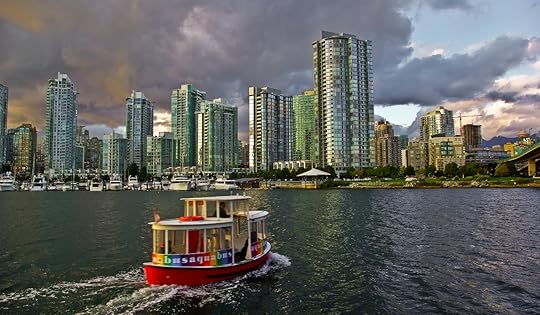
Photo: David J Laporte
AFTER STARTING a cigarette butts recycling program in 2013 to keep its streets clean of the “most littered item across the globe“, Metro Vancouver is going one step further by introducing a food scraps ban.
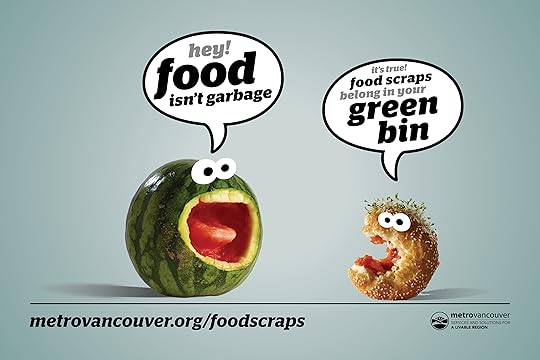
Photo: Metro Vancouver
Food scraps being thrown away with regular garbage is a bigger problem than you would think. When in the landfills, food and other organic materials are buried under other waste and do not decompose properly due to the lack of oxygen. They consequently create methane, a greenhouse gas that contributes to global warming. Not only that, but they use up a lot of landfill space. Over 30% of what Vancouverites send to the landfill is compostable organics, says Metro Vancouver.
Since January 2015, in Vancouver, organic waste is to be separated from solid waste. In the same way we all separate plastic bottles, cans, paper products, etc. from the rest of our trash, food waste has to be disposed of in a special green bin. This new recycling program includes a large spectrum of waste: “raw food, plate scrapings, leftovers, depackaged food, meat, etc. Some food-soiled paper such as pizza boxes or used table napkins can also be collected with the food scraps”, explains Metro Vancouver.
Although some may already grimace at the idea of keeping food waste in their homes until collection day, there’s nothing a bit of organization won’t fix. You can easily freeze your organic waste in a brown paper bag until it gets picked up. Most cities do not have a program like the one set up in Vancouver, but that should not prevent you from trying your best! You can easily dispose of your frozen organic waste in some drop off spots in your city or in a friend’s composter when you’re running out of space (that’s what I do).
There have been several other green-bin programs in Vancouver over the past years; therefore this organic disposal ban does not come as a shock. The population also has a few months to get used to the process as the food scraps recycling program will not be strictly enforced until July 2015. 
Falling in love on the road is messy
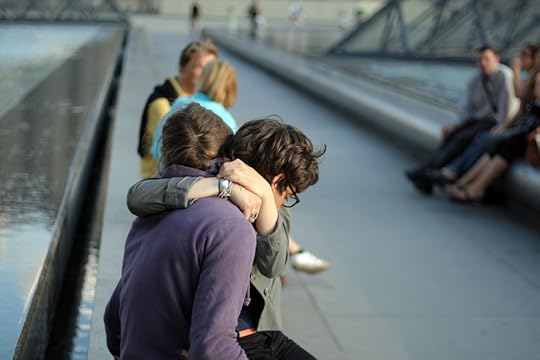
Photo: iLikeSpoons
I MET DEVON while traveling through Peru; both of us had signed up for the same four-day Salkantay trek to Machu Picchu. A 5 am breakfast left us sitting opposite each other at a table, sharing a basket of stale bread and noticeably artificial butter. The news that he was on his way back to the United States acted merely as a means to conversation; I didn’t know right away that we would end up emotionally engaged further into the trip.
I told him of my plan to move to Santiago, he told me he had just finished up a year in the same city, and that I would love it there. Our plans spilled out before us, an ending seemingly solidified before a beginning had even transpired.
He was the only American on the hike, and so we became even closer within minutes — we chatted about our backgrounds as education majors, our ridiculous love of Boy Meets World, and the places both predictable and poetic that our travels had taken us to.
We sat next to each other, in what barely constituted as a tent, while dinner was prepared, our knees accidentally brushing against each other underneath the table as we played cards. Our bodies moved closer together as the rain outside threatened to come in, the cold merely acting as a catalyst for our growing connection.
We found each other while we hiked, intentionally setting our paces to match one another’s. As the sun dipped below the mountain peaks we took advantage of the dying light, subtly exploring the campsite, our pursuit a mere rouse to steal time away from the group. And as we reached the top of the mountain, we congratulated each other on the climb and perhaps for being open to the possibility of what could be.
The trip was over almost as soon as it had begun, and we were back where we had started. Hugging goodbye as we parted, I was unsure of when we would see each other again. I sat in my hostel bed contemplating my longing for Devon, a man I still hardly knew. Unaware of how my feelings for him had developed, unsure of what I really missed about him, and how much I simply missed the idea of him, yet aware that I wanted more time, time to let answers replace projections.
I knew that I missed his morning hugs. Emerging from the tent into the bitter cold of 4 am wake up calls he would be there, arms outstretched, waiting to pull me into a warm embrace. I missed his deep laugh and ability to transition so effortlessly in and out of humor. I missed the way he listened when I talked, the way he looked at me and told me that I made him laugh, the way he complimented me as if I was the only one he noticed.
I wasn’t yet sure of exactly who I was falling for, but these moments had taken up permanent residence in my thoughts without an option to press pause. The idea of him having already developed into a person that I could see myself with, a person that I may have already lost myself in.
He was staying in Cusco for one more night after the hike, and I quickly realized that even one more night mattered. I wasn’t ready for the long goodbye.
And it seemed that neither was he. A message sat in my inbox, waiting for me as soon as I got back to my hostel after our group had dispersed.
“Lets get dinner.”
Over mediocre hamburgers, we found ourselves drinking too much, chatting too loudly, grinning too widely, the excitement uncontrollable.
Devon decided not to leave, missed his bus back to Lima, and stayed around so that we could spend more time together. One more week we decided, one more week to continue our growing flirtation, and as we both prolonged the idea of goodbye, I couldn’t help but picture the future as limitless. I was getting ahead of myself, and lost in the idea of what we could be.
It had only been five days, and yet he kissed me like he cared about me, held my hand like we had known each other forever, looked at me like he already feared what goodbye would mean.
I felt the same, like he was somebody that I already trusted, that I already knew, somebody that I wanted to be with — not just for the next few days but forever.
It sounds crazy, yet so are most relationships on the road. Connection happens fast, intimacy comes even quicker, forever is an easy word to latch onto when an expiration date lies so close in the future.
A week quickly spilled into two, the end approaching even as we refused to acknowledge it. We sang karaoke, fast-paced beats in Spanish that we could barely keep up with, in a dark dive bar in town, the fake leather seats artfully decorated with duct tape. We quickly discovered how perfectly our past experiences and future plans aligned, a life of teaching and travel our reality, a desire to pursue writing our motivation. We went hiking and biking through city streets that we discovered together, a honeymoon before dating had even begun. We chatted late into the nights, laughing at what was present, living so fully in the moment that we forgot it wouldn’t last.
And it didn’t last, it couldn’t last.
.
Then came the goodbye, the tears springing forward before I even had time to contextualize them, surprising myself at how attached I had grown so quickly to the idea of Devon. For what is two weeks in the context of a lifetime? Was it even real? How would I explain this blip of a connection to someone back home? A relationship that in so many ways felt more honest, more genuine, more grounded in respect than other relationships lasting much longer in duration?
Time is not a luxury that many travelers have when it comes to relationships. We are unable to control the duration or speed at which our forays will unravel. Does this lack of control prove lack of validity? Are we fooling ourselves to believe that these trysts hold meaning?
The answer is, of course not. For significance comes from connection. Life is all about meeting people. Racing around the world, working your way through the song and dance of initial connection. Sometimes the dance goes well, you step with the right foot and them with the left, an effortless coordination. Sometimes it’s messy and sloppy, frequent pauses, rehearsed utterances, an effort much more than a pleasure. However, as connection is life, you keep at it, throwing yourself into the vulnerable position of exposing what lies beyond personal fact and instead flirts with emotion. Connection, friendship, physical touch — we exist on this earth to share ourselves with others, and regardless of our path it is the most salient way that meaning is pumped into the whole big picture. 
Tired of jet lag? Ban time zones
TIME ZONES JUST COMPLICATE things in a globalized world. You have to count how many hours people in different places are ahead of you to figure out the time there, and it makes coordinating calls or plans somewhat difficult. Vox has put together this great 60-second video making the case for putting the entire world being on the same time.
For the record, no: it wouldn’t actually change the effects of jet lag, as they are related not to the time on the clock but to your circadian rhythms as they respond to daylight, but it would take the stigma away from waking up at 1 p.m.: in some parts of the world, 1 p.m. (or maybe just 1300 for clarity) could be midday, while in other places, it could be the middle of the night. So while you might still feel drowsy when flying across the globe, you at least wouldn’t have to feel as guilty about sleeping in.
This would save us from the idiocy of Daylight Savings Time, and it would get rid of weird inconsistencies in the time zone system, such as the fact that China only sits in one time zone, while the countries to the North and South of it span six. So let’s start the rallying cry: no more time zones! Equal time for all! 
Featured photo by TimeZonesBoy
Mapping the cheapest and most expensive places in the world to get your vice on
Using data from the UN Office of Drugs and Crime and the crowd-sourced cost collector Numbeo, we created this series of charts showing you the cost of various vices around the world.
Hover over the maps to see the cost in a specific country. All prices are listed in USD.
Cannabis per gram
Cheapest
Most Expensive
1. India $0.08
2. South Africa $0.10
3. Guatemala $0.20
4. Kenya $0.20
5. Nigeria $0.20
6. Brazil $0.30
7. Colombia $1.32
8. Dominican Republic $1.33
1. United Arab Emirates $110
2. Brunei $73.80
3. Japan $68.40
4. Cyprus $39.70
5. Estonia $25.15
6. Finland $23.20
7. Australia $22.90
8. Singapore $22.10
Cocaine per gram
Cheapest
Most Expensive
1. Bolivia $3.50
2. Colombia $3.50
3. Peru $4.50
4. Ecuador $5.00
5. Argentina $5.90
6. Dominican Republic $8.00
7. Honduras $9.20
8. Venezuela $9.30
1. Australia $300.00
2. Japan $269.50
3. Egypt $205.50
4. Ukraine $189.60
5. New Zealand $179.30
6. Russia $174.00
7. Moldova $155.40
8. Norway $154.45
MDMA per tablet
Cheapest
Most Expensive
1. Poland $1.70
2. Serbia $2.65
3. Netherlands $3.90
4. China $4.50
5. Lithuania $4.60
6. United Kingdom $4.60
7. Hungary $4.80
8. Portugal $5.00
1. Myanmar $68.10
2. Russia $57.50
3. South Korea $56.00
4. Norway $44.10
5. Montenegro $41.70
6. Egypt $40.20
7. United States $35.00
8. Japan $33.65
Herion per gram
Cheapest
Most Expensive
1. Kenya $1.90
2. Afghanistan $2.40
3. Pakistan $3.00
4. Cambodia $5.00
5. Honduras $5.30
6. Nigeria $6.80
7. Malaysia $8.88
8. India $10.93
1. Brunei $1330.40
2. New Zealand $717.40
3. Japan $683.60
4. Georgia $650
5. Sweden $276.50
6. Canada $254.50
7. Denmark $213.60
8. United States $200.00
Meth per gram
Cheapest
Most Expensive
1. Laos $1.00
2. Cambodia $1.60
3. Jordan $2.10
4. Kenya $2.38
5. Serbia $2.65
6. Portugal $3.10
7. Turkey $4.10
8. Bangladesh $4.50
1. Australia $641.40
2. New Zealand $573.90
3. South Korea $562.00
4. Switzerland $286.70
5. Philippines $214.10
6. Indonesia $203.80
7. Saudi Arabia $199.70
8. Singapore $184.25
Pack of cigarettes, Marlboros
Cheapest
Most Expensive
1. Pakistan $1.02
2. Vietnam $1.04
3. Nicaragua $1.10
4. Cambodia $1.10
5. Philippines $1.11
6. Kazakhstan $1.20
7. Indonesia $1.32
8. Nepal $1.33
1. Australia $16.23
2. New Zealand $15.35
3. Norway $15.30
4. Ireland $12.72
5. United Kingdom $12.40
6. Iceland $9.75
7. Singapore $9.43
8. Monaco $9.40
Domestic beer, .05 liter bottle
Cheapest
Most Expensive
1. Vietnam $0.59
2. Ukraine $0.67
3. Czech Republic $0.70
4. Macao $0.71
5. Panama $0.73
6. Saudi Arabia $0.76
7. China $0.77
8. Bulgaria $0.77
1. Iran $7.24
2. United Arab Emirates $6.85
3. Qatar $5.81
4. Papua New Guinea $5.64
5. Libya $4.70
6. Singapore $4.54
7. Norway $4.53
8. Australia $4.31
Bottle of mid-range wine
Cheapest
Most Expensive
1. Moldova $2.97
2. South Africa $4.29
3. Ethiopia $4.35
4. Namibia $4.38
5. Hungary $4.41
6. Uzbekistan $4.44
7. Macedonia $4.45
8. Ukraine $4.50
1. Saudi Arabia $99.99
2. Kuwait $99.96
3. Iran $40.00
4. Libya $39.04
5. Indonesia $24.91
6. Singapore $23.69
7. Bahrain $21.99
8. Qatar $20.60
Cappuccino, regular
Cheapest
Most Expensive
1. Ethiopia $0.64
2. Algeria $0.90
3. Libya $0.91
4. India $1.08
5. Tunisia $1.20
6. Dominican Republic $1.27
7. Iraq $1.31
8. Albania $1.36
1. Denmark $5.95
2. Norway $5.68
3. Monaco $5.25
4. Switzerland $4.87
5. Cyprus $4.73
6. Kuwait $4.65
7. Sweden $4.63
8. Qatar $4.53
Coke/Pepsi, .33 liter bottle
Cheapest
Most Expensive
1. Pakistan $0.33
2. India $0.34
3. Bangladesh $0.36
4. Saudi Arabia $0.40
5. Oman $0.42
6. Nepal $0.42
7. Egypt $0.42
8. Iraq $0.43
1. Switzerland $4.43
2. Monaco $4.14
3. Norway $4.09
4. Denmark $3.31
5. France $3.29
6. Austria $3.12
7. Luxembourg $2.95
8. Finland $2.83
Fast food, combo meal at McDonald’s or similar
Cheapest
Most Expensive
1. Philippines $2.13
2. Indonesia $2.26
3. India $2.36
4. Laos $2.40
5. Malaysia $2.46
6. Vietnam $2.77
7. Macao $2.82
8. Hong Kong $2.82
1. Norway $11.46
2. Venezuela $10.96
3. Switzerland $10.66
4. Israel $9.35
5. Denmark $8.71
6. Iceland $8.52
7. Luxembourg $8.40
8. France $8.00
By Simran Khosla, GlobalPost
This article is syndicated from GlobalPost.
11 things you shouldn't do in a bar

Photo: badjonni
1. Naggin’ the bouncer
They don’t care about your time spent waiting in the lineup. And if you’re rude you’ll never get in. Be friendly and patient. A tip never hurt anyone either.
2. Falling for the “I’ll be right back” line
If you ever hear a girl use this line, she is not coming back. This is her way of saying, “Thanks for the free drinks and terrible conversation!”
3. Picking a fight with a bouncer
You’ll never win. It doesn’t matter if you think you’re bigger or stronger.

More like this What bartenders actually think of your drink order
4. Taking off your clothes or shoes
First of all, there’s nothing sexy about taking off a piece of clothing in a club, especially shoes. Here is a thought, if your heels hurt, don’t wear them! And for the guys, if you’re that sweaty and need to take your shirt off, you need to go home.
5. Doing drugs or get blackout drunk in public
Nothing will hurt your reputation more than people seeing you do key bumps in the crowd. This is the most idiotic decision you can make.
6. Going crazy with PDA
Nobody likes to watch your sloppy make-out and dry humping. Some people take it to the level of soft-core porn that might be better suited at the Motel 6 than a dance floor!
7. Holding up the line at the bar
Know your order and have your money ready. Most likely there’s a lineup of impatient and thirsty customers trying to get wasted, too.

More like this 53 things you're doing that totally annoy the bartender
8. Stiffing on tips
Tipping a service provider is not mandatory, but it is a custom that should be respected. In North America, tipping is important in the service sector because the people who work in these industries typically receive minimum wage. It also gives the customer a direct influence over his or her service experience, and provides incentive for service staff to work hard.
9. Neglecting to befriend your bartender
When you want a drink and the bar is packed they’ll probably serve you first — if you leave a tip, of course.
10. Leaving your belongings lying around the bar
Many locations provide coat check for a minimal price. When you’ve spent $1,000 on your purse, you can afford the $4 to keep it safe while you are dancing. Drunken people have poor judgement and steal stuff around the club all the time.
11. Bringing the bachelorette party props
Plain and simple: the overplayed sashes, feather boas, veils, and inappropriately shaped straws just don’t belong in the bar. 
Do you know the wonders of the world
What to do in Finland in your 20s

Photo: Visit Finland
1. Spend a day floating on a river with 5,000 other party animals.
You, a bunch of friends, and lots of beer floating down the river on a rubber boat. Add thousands more people and a hot summer day and you have the craziest Finnish party (and a near-death experience — alcohol and large bodies of water don’t mix too well). Kaljakellunta or Beer Floating does not have official organizers. Instead, every year the date is decided on social media and the word spreads all over Finland like an STD on a college campus.
Rubber-craft hopping to do some socializing with the guys nearby might seem like a good idea, but, from experience, I can guarantee that, one way or another, you’ll end up in the water.
2. Get famous.
What’s the connection between a guy in a Superman suit tightrope-walking and a man in a TV program trying to break the world record for the most Coca-Cola ever consumed? Well, they both got famous in Finland for doing something stupid.
With a population smaller than London’s in an area 100,000 km2 bigger than Great Britain, it’s rather easy to get well-known. Also, Finnish media loves weird stories (mostly because journalists are tired of writing about the effects of the lack of sun during the winter months), so this is your chance. Drive from Hanko to Kuusamo with a mini digger (it’ll take you about a month), let everybody know about it on social media, and there’ll be more than 3,000 people waiting to greet you when you will arrive.
3. Go celebrate summer, Viking style.
Hit Provinssirock, Ruisrock, and Metsäfestival and enjoy the very long hot days before November and its 9 hours of sunlight come wrecking your world. Finnish summer festivals are crazier than Woodstock ever was, with thousands of people looking for love and adventures getting knocked right out of their senses by the warm summer days.
In the middle of a furious, loud, jubilant Finnish crowd it’s not too difficult to imagine what Vikings did for fun. Make these four days of camping and drinking the best time of your life; the memories will amuse you for the years to come and, if you did it properly, they’ll also amuse your friends for the next decade.
4. Enjoy some Midsummer’s magic.
A night when the sun never sets is the best time for a party by the lake with lots of friends, no neighbours, and a Midsummer bonfire. Enjoy the sauna (naked, of course), share hidden swigs of Finlandia, collect flowers to put under your pillow so that you can see your future spouse in your dreams, and then make a big fire to stare at with your friends (and compare with the other ones burning around the lake). In the early hours, sing karaoke without background music. What’s the magic? It’s that you’ve survived to see the next day.
5. Explore the wilderness of Finland while you can.
Your 20s is the best time to explore Northern Finland. You have all your mental and physical capacities to get you out of a bad situation if needs be, so head all the way up to Karhunkierros in autumn (not too cold, not too hot, no mosquitoes), and set camp with no one around for a 100 km radius. Split your time between exploring the northern woods, hiking, and fishing with you buddies like the hard-core explorers you see on TV…and make sure to make time for sitting around a campfire drinking beer. Here’s the plan:
Charge your phone battery.
Choose buddies who run slower than you or who can shoot a bear under pressure.
Take enough food with you, not only beer.
If you are the proud owner of a Nokia, charge your battery again.
Do it.
6. Make love under the Northern Lights.
The Japanese believe that making love under the Northern Lights bestows good fortune for the baby that may be the result of such a romantic night. However, if you’re not looking forward to the baby, read your high school biology notes again before heading to one of the cottages of Levi, Ylläs.
7. Create a party at the Helsinki Central Railway Station.
Choose a late Friday or Saturday night, tune your guitar, stand in front of the Helsinki railway station and encourage people to start dancing. I’ve seen it happen many times. This is the place to restore your faith in the humanity (if you know how to play) and remind everyone why you should always act like a 20 year old. 
Pittsburghers and everyone else

Photo: C.C. Chapman
1. Every person’s just a yinz to us.
Using words such as “sweep” instead of “vacuum” or “pop” instead of “soda” is commonplace. Yinz is probably the most often referenced Pittsburgh word and yes, everyone does use it — profusely.
2. We think French fries are healthy.
French fries and coleslaw top all Pittsburgh pastrami sandwiches. We might even throw some on a salad. Right, Primanti Brothers?
3. Bring on the clouds; sunlight’s weird.
Pittsburgh is cloudy 200-300 days per year. Only cities like Seattle and Portland beat us out on less sunlight. Whatever.

More like this 9 dates everyone from Pittsburgh goes on
4. We know how to appreciate a good bridge.
Pittsburgh has 446 bridges just within the city limits, making us the most bridge-filled city in the entire world. Get out of our way, Venice.
5. Some people like to “watch” sports, but we live and breathe them.
The Pittsburgh Steelers have more super bowl wins than any other team in NFL history. In Pittsburgh, if you’re not a fan of the Steelers, Penguins, Pirates, or all three — you’re nothing.
6. We’re from the actual Mister Roger’s Neighborhood.
It was filmed here. Fred Rogers grew up riding trolleys through Pittsburgh.
7. We only ice skate near castles.
PPG Place and its castle-like peaks — it’s where we are every winter.

This story was produced through the travel journalism programs at MatadorU. Learn More
8. We don’t need to shop or eat anywhere other than the Strip.
The Strip District is filled with some of the best international and local restaurants in town. Right off of the Allegheny River, it’s just a small strip of land jam-packed with clothing shops, bars, and locals selling sports gear. That’s all you really need.
9. We never use GPS.
Because they don’t really work here. We have so many bridges — they overlap. A GPS can’t even tell what level of road we’re on.
10. We love Pittsburgh culture, but we want to experience everyone else’s too.
Pittsburgh’s cultural district is home to Heinz Hall, the Benedum Center and the Byham Theatre. We have shows devoted to Asian and African cultures, and there’s an ever-changing display for different cultures in our museums. Plus, we’ve got Meat and Potatoes, which is usually booked weeks in advance because of its culturally-diverse menu. We always get the bone marrow. 
March 4, 2015
Your country's best export [map]

Using data from the CIA World Factbook, we labeled every country in the world by its highest-valued export, aka the commodity that makes the country the most money in the global market.
Unsurprisingly, much of the world runs on oil, particularly the Middle East and Central Asia. Europe is the world’s workshop, where most of the machinery and motor vehicles are made, from optical instruments to BMWs. Latin America brings a blend of food products and oil to the trading table. Asia is the world’s manufacturing center, where the world’s clothing, wood products, and semiconductors are made. Africa is extremely rich in natural resources, particularly precious metals and oil. A substantial part of the continent makes its money on diamonds, gold or oil.
Click on any of the maps below to see an enlarged version.


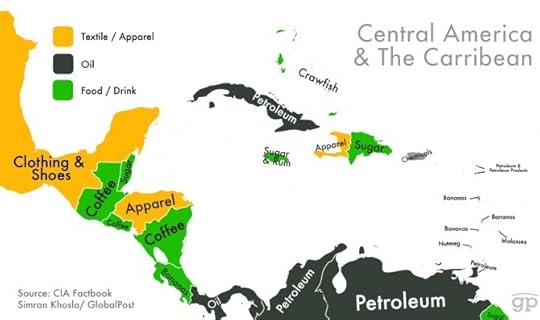
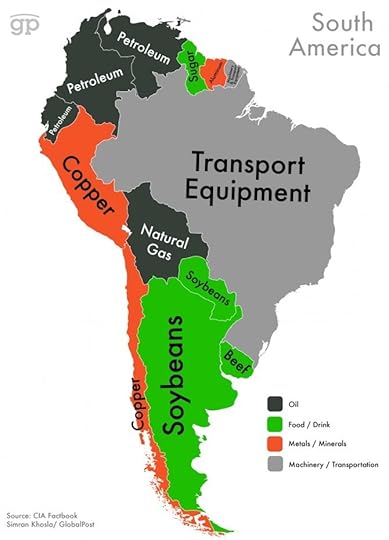



By Simian Khosla, GlobalPost
This article is syndicated from GlobalPost.
Matador Network's Blog
- Matador Network's profile
- 6 followers



